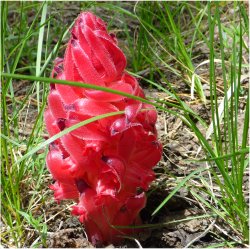Tropaeolum majus L. features: five-petaled flower, yellow nectar spur at flower rear, circular green leaf with veins radiating to slightly-lobed leaf margin
| Tweet |
All parts of monks cress plants are edible. But don't munch away the plants found at a botanical garden display, eat your home-grown ones or enjoy monks cress flower toppings served with a garden salad ordered in a restaurant.
 |

